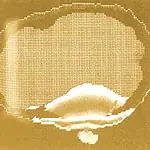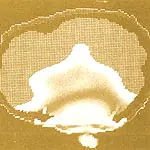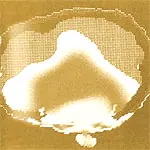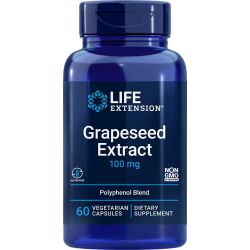Broad-Spectrum Effects of Grape Seed Extract
 It is clear that France gave us the Statue of Liberty to protect us and french fries to kill us.
It is clear that France gave us the Statue of Liberty to protect us and french fries to kill us.
They themselves are not harmed by their fatty food, but we Americans are. Despite high blood pressure and cholesterol, a Frenchman’s risk of dying from heart disease is the lowest of any Western industrialized nation—up to 50% lower than in America and parts of Europe.1-3 (The risk for French women is less clear.) The French also happen to drink more wine, particularly red wine, than anyone else.
The “French paradox” has become a cottage industry all unto itself. New explanations appear regularly to explain how the French consume fatty foods yet escape heart attacks. French researchers recently proposed that the real paradox of France is that it spends a lot of money on health care, yet has very few scanners such as the positron emission tomography (PET) scanner.4 Americans have proposed that the betaine (trimethylglycine, or TMG) added to cheap wine is the real reason for the French paradox.5
The most consistent explanation is that wine contains factors that keep the French from having heart attacks. Some have argued that it is the alcohol itself, and there is support for this argument. But the strongest evidence for what is behind the heart-protective effects of wine centers around the non-alcoholic part. In this respect, red wine is the winner, but white wine also is a contender. Both contain powerful antioxidants and other factors that protect the heart and vascular system.6-8
Protective Factors in Wine
 Grapevines are living pharmacies. Each part of the plant creates its own medicinal agents. Leaves, for example, make their own sunscreen.9 Grapes make their own pesticide.9 Grapes and grape leaves make their own fungicide.10 As fascinating as this is, even more interesting is that humans can benefit from these natural nutraceuticals as much as the plants. Grapevines contain dozens of different phytocompounds that have different effects on different areas of the human body. The most studied of these phytocompounds are quercetin, resveratrol, proanthocyanidins (from seeds), and anthocyanins (which give purple and red grapes their color). All of these phytocompounds are classified as polyphenols.
Grapevines are living pharmacies. Each part of the plant creates its own medicinal agents. Leaves, for example, make their own sunscreen.9 Grapes make their own pesticide.9 Grapes and grape leaves make their own fungicide.10 As fascinating as this is, even more interesting is that humans can benefit from these natural nutraceuticals as much as the plants. Grapevines contain dozens of different phytocompounds that have different effects on different areas of the human body. The most studied of these phytocompounds are quercetin, resveratrol, proanthocyanidins (from seeds), and anthocyanins (which give purple and red grapes their color). All of these phytocompounds are classified as polyphenols.
The seeds of grapes contain many good things. First are the antioxidants, more rightly called super-antioxidants. They’re not only more powerful than standard antioxidants like vitamin E, but also more diverse. The factors contained in grape seed go way beyond the ordinary. Running the gambit from vaporizing the effects of environmental stress to intercepting free radicals created by food, the compounds in grape seed extract provide broad-spectrum antioxidant protection.11,12
It doesn’t end there, however. Scientific studies document multiple effects, including antibiotic, anti-tumor, anti-diabetic, anti-ulcer, pro-heart and arteries, and anti-brain aging.11,13,14
Catching the “Molecular Sharks”
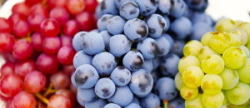 Proanthocyanidins are the main active ingredients in grape seed extract that go after “molecular sharks” otherwise known as free radicals. They make up about 90% of grape seed extract. Various versions are all united by a similar chemical structure and possess powerful antioxidant activity15—20 times stronger than that of vitamin E and 50 times stronger than that of vitamin C.16 The “super-antioxidant” effects are neatly summed up in a study showing that pretreatment with grape seed extract reduces DNA fragmentation in the brain by a whopping 50% and in the liver by 47% after exposure to a strong chemical.12 Proanthocyanidins, along with resveratrol and quercetin, are some of the healthy factors in wine.
Proanthocyanidins are the main active ingredients in grape seed extract that go after “molecular sharks” otherwise known as free radicals. They make up about 90% of grape seed extract. Various versions are all united by a similar chemical structure and possess powerful antioxidant activity15—20 times stronger than that of vitamin E and 50 times stronger than that of vitamin C.16 The “super-antioxidant” effects are neatly summed up in a study showing that pretreatment with grape seed extract reduces DNA fragmentation in the brain by a whopping 50% and in the liver by 47% after exposure to a strong chemical.12 Proanthocyanidins, along with resveratrol and quercetin, are some of the healthy factors in wine.
When wine is consumed is another factor to consider. It is often overlooked, but wine is usually consumed with meals, and this may be an important factor in its health effects. After a person eats, the “molecular sharks” go crazy.17 Protein, carbohydrates, and fat from food provoke free radicals to intensify. Low-density lipoprotein (LDL) remains susceptible to free radical attack up to three hours after a meal.18 Italian researchers have demonstrated that grape seed extract can significantly reverse this phenomenon. Three hundred milligrams of grape seed extract consumed with a meal reduces levels of plasma lipid hydroperoxides (intermediates of lipid peroxidation) by 1.5 times.18
|
||||||||||||||||
Syndrome X and Blood Sugar
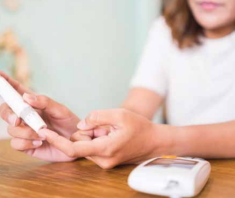 Fat, blood sugar, diabetes—they all affect the cardiovascular system. People do not have to have full-blown diabetes to have sugar-related damage to their heart and vascular systems. Damage can accumulate at a low level for years. Even with normal blood sugar and body weight, cardiovascular health is threatened by environmental stresses such as smog, chemicals, and age. What can be done?
Fat, blood sugar, diabetes—they all affect the cardiovascular system. People do not have to have full-blown diabetes to have sugar-related damage to their heart and vascular systems. Damage can accumulate at a low level for years. Even with normal blood sugar and body weight, cardiovascular health is threatened by environmental stresses such as smog, chemicals, and age. What can be done?
The number-one antidote is a healthy diet. Vegetables, fruit, whole grains, and—again—vegetables. Second, take out insurance. Scientific studies show that high-quality supplements may be the best health insurance you can get for your cardiovascular system. They neutralize chemicals, counteract free radicals, and slash the risk of age-related cardiovascular diseases that kill and disable the most Americans.19-21 They provide a consistently high dose of concentrated nutrients in a tiny package, and in some cases, they are absorbed better than the nutrients from food.22
Syndrome X is a condition characterized by a fat belly, insulin resistance, high blood pressure, heart problems, and elevated cholesterol. This diabetes-like condition is reaching “epidemic proportions.”23
Researchers in France recently induced the equivalent of Syndrome X in rodents by feeding them a diet with 60% fruit sugar (fructose).24 Such a diet causes blood pressure to skyrocket, free radicals to accelerate, and the heart to begin to enlarge. Previously, the same researchers had demonstrated that polyphenols from red wine could reverse all Syndrome X symptoms in rodents except insulin resistance.25 Now they wanted to go after insulin resistance as well. In this condition, the pancreas makes more and more insulin but seems to be less and less effective at handling blood sugar. In humans, white wine after a meal can reduce insulin and glucose, suggesting that polyphenols can improve blood sugar.26
This time, instead of using whole grape extract, the researchers broke the extract down into its various components, looking for the one component that might improve insulin resistance. They found it in the seed, which prevented insulin resistance in the face of huge amounts of sugar.24
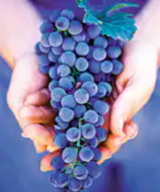 By study’s end, all the negative effects of the fructose diet had been brought under control by various components of grapes. High blood pressure and heart enlargement were prevented by the “anthocyanin” part of grape skin.24 Triglycerides responded best to the “procyanidins” found in the seeds, while free radicals were blocked by all parts of the grape.24
By study’s end, all the negative effects of the fructose diet had been brought under control by various components of grapes. High blood pressure and heart enlargement were prevented by the “anthocyanin” part of grape skin.24 Triglycerides responded best to the “procyanidins” found in the seeds, while free radicals were blocked by all parts of the grape.24
As compelling as this research is, it is important to note that it was conducted under highly controlled laboratory conditions in which huge amounts of the grape compounds (along with huge amounts of sugar) were fed directly into the rodents’ stomachs. It is not something that can be replicated at home.
This is a compelling study, but blood sugar is not the only thing grape nutraceuticals can normalize. Heart and blood vessel problems involve several abnormalities that respond to grape phytocompounds. Resveratrol, quercetin, and catechin from grapes, for example, reduce so-called “fatty streaks” in blood vessels, and they do it in amounts roughly equivalent to what a person would get from drinking several glasses of red wine a day.27 Grape seed extract helps prevent blood from clumping into clots that can cause a heart attack or stroke.28,29 It reduces “foam cells” caused by a high-fat diet30 by as much as 60% depending on the dose (100 mg/kg).31 Pretreatment with grape-derived resveratrol may offer cardioprotection and enhanced recovery from a heart attack.32 Resveratrol also appears to have extremely powerful effects against stroke.33 These are some of the things that grape nutraceuticals can do for the heart and vascular system.
Your Brain as a Radio Receiver
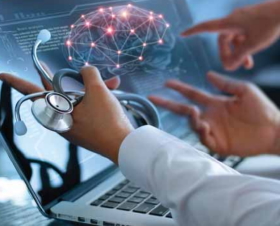 Ever wonder what your cell phone might be doing to your brain cells? You might if you found out that talking on a cell phone is somewhat like holding a microwave oven up to your head. In their publication “Cellular telephones and effects on the brain: the head as an antenna and brain tissue as a radio receiver,” researchers in Israel report, “the human head can serve as a lossy [energy-dissipating] resonator for the electromagnetic radiation emitted by the cellular telephone, absorbing much of the energy specifically from these wavelengths.”34 The smaller the head, the bigger the risk, which is why researchers who have studied cell phones advise that children should not use them.35,36
Ever wonder what your cell phone might be doing to your brain cells? You might if you found out that talking on a cell phone is somewhat like holding a microwave oven up to your head. In their publication “Cellular telephones and effects on the brain: the head as an antenna and brain tissue as a radio receiver,” researchers in Israel report, “the human head can serve as a lossy [energy-dissipating] resonator for the electromagnetic radiation emitted by the cellular telephone, absorbing much of the energy specifically from these wavelengths.”34 The smaller the head, the bigger the risk, which is why researchers who have studied cell phones advise that children should not use them.35,36
Last year, researchers reviewed 20 studies of cell phone-type radiation. None of the studies demonstrated that cell phone-type radiation is safe.37 The risk ranges from miniscule to five times, but these studies are “iffy” because they were short term, poorly controlled, and based on people remembering details about their cell phone use. Controlled studies in rodents exposed to cell phone microwaves suggest that there is no increased risk.38,39 Still, brain cancer is not something to mess around with, and pesky data link cell phone radiation to unfriendly abnormalities at the cellular level, such as might affect the blood-brain barrier.40 It is very likely that some people are susceptible to cell phone radiation, while others are not.41 The problem is determining into which category you fall before the diagnosis, not afterwards. Is there a way to counteract the effects of cell phone radiation until more is known?
Research in this field is very preliminary, but there are clues about how microwaves affect the brain and what can be done to protect against them.
Not surprisingly, cell phone radiation generates free radicals.42 Radicals damage DNA and provoke increases in natural antioxidant enzymes that can become depleted with prolonged exposure.42,43 The affected antioxidant enzymes include superoxide dismutase and glutathione peroxidase.44,45 Even more importantly, cell phone radiation changes the levels of dozens of proteins in cells, some of which affect energy production and others that affect the blood-brain barrier.40,46
Ginkgo biloba is the first supplement to be tested against cell phone radiation.44 Pretreatment with this brain-protective supplement reverses cell phone-induced oxidative stress and depletion of antioxidant enzymes in rodents.
The biochemistry of ginkgo is very similar to resveratrol, and both interact with quercetin. Resveratrol and grape seed extract both protect against the type of oxidative stress induced by cell phones, though they haven’t been tested directly against cell phone radiation.47-50
|
Take 20 Years Off Your Brain
 Ever wish you could think of things, and remember like you used to? The brain ages just like the rest of you. The important thing is to counteract the wear and tear as much as possible.
Ever wish you could think of things, and remember like you used to? The brain ages just like the rest of you. The important thing is to counteract the wear and tear as much as possible.
There is good news on this front. For the first time in history, researchers have proven that a supplement reverses brain aging at the most basic level: proteins. This exciting research is like discovering what is wrong with each brick of an aging house.
What these researchers found is that age not only causes proteins to be lost, but also causes undesirable proteins to be gained. The age-related increases are just as detrimental as age-related decreases.
This research from the University of Alabama shows that grape seed extract normalizes 13 different brain proteins back to youthful levels.14 Undesirable proteins that impede the brain’s ability to make new cells are reduced.14,51 (New brain cells are made in certain areas of the brain throughout the human life span. A protein that makes a type of scar tissue in the brain is also reduced, potentially helping the brain recover from injuries like stroke.14,52,53 The same protein also shows up in certain types of brain tumors and in Alzheimer’s disease.54,55 Grape seed extract reduces these undesirable proteins, while at the same time increasing other proteins that are lost with age.14
The researchers concluded that polyphenols have diverse effects on brain aging.14 This research is also noteworthy in that it shows, for the first time, that “normal” aging can be reversed in a healthy adult rat. Most brain dementia studies examine diseased or aged brains instead of healthy ones.
Grape Seed for Bones and Metabolism
 Grape seed extract is a very broad-spectrum supplement. It is a powerful antioxidant against diverse types of radicals; it stops ulcers as effectively as some drugs; it can keep sun-induced papillomas from turning into carcinomas; and it helps maintain bone in the jaw.56-59 This feature may help to preserve teeth. Studies have shown that healthy teeth and gums may reduce the risk of premature death.60 Bones, too, are important for health, as fractures greatly increase the risk of mortality.61
Grape seed extract is a very broad-spectrum supplement. It is a powerful antioxidant against diverse types of radicals; it stops ulcers as effectively as some drugs; it can keep sun-induced papillomas from turning into carcinomas; and it helps maintain bone in the jaw.56-59 This feature may help to preserve teeth. Studies have shown that healthy teeth and gums may reduce the risk of premature death.60 Bones, too, are important for health, as fractures greatly increase the risk of mortality.61
Grape seed extract and resveratrol together may have additive effects. In 1998, Japanese re-searchers first showed that resveratrol directly stimulates the cells that make bones.62 They subsequently demonstrated that resveratrol supplements maintain bone strength in older rats.63 Sun-dried skin also benefits from grape seed extract, which reverses some of the damage.64
Another benefit of grape seed extract is that it streamlines metabolism. This is very important for many reasons, but perhaps one of the most compelling is that blood sugar affects longevity, and “longevity genes” are linked to insulin and other factors having to do with metabolism.65,66 Type II diabetes has been characterized as “severe insulin resistance,” a condition that causes a form of premature aging.67,68 Clinical studies show that grape seed extract stabilizes blood sugar, mobilizes fat, and causes people to eat slightly less.69-71
The Future of Grape Nutraceuticals
Last year, Chinese researchers reported finding three new compounds in grape seed.72 All that is known about them so far is that they protect DNA against free radicals. What else they may do remains to be seen. Are they new “super-antioxidants”? Will they stop certain types of cancer? Will they chase off toxins? Or keep blood vessels and bones from aging? Nobody knows yet, but the prognosis is good that they will not disappoint us. The science of grapes is, to use the word of researchers, remarkable.
Material used with permission of Life Extension. All rights reserved.
- Rosenkranz S, Knirel D, Dietrich H, Flesch M, Erdmann E, Bohm M. Inhibition of the PDGF receptor by red wine flavonoids provides a molecular explanation for the “French paradox”. FASEB J. 2002 Dec;16(14):1958-60.
- Criqui MH, Ringel BL. Does diet or alcohol explain the French paradox? Lancet. 1994 Dec 24-31;344(8939-8940):1719-23.
- Burr ML. Explaining the French paradox. JR Soc Health. 1995 Aug;115(4):217-9.
- Lavayssiere R, Cabee A. MRI in France: the French paradox. J Magn Reson Imaging. 2001 Apr;13(4):528-33.
- Mar MH, Zeisel SH. Betaine in wine: answer to the French paradox? Med Hypotheses. 1999 Nov;53(5):383-5.
- De Beer D, Joubert E, Gelderblom W, Manley M. Antioxidant activity of South African red and white cultivar wines: free radical scavenging. J Agric Food Chem. 2003 Feb 12;51(4):902-9.
- Cui J, Tosaki A, Cordis GA, et al. Cardioprotective abilities of white wine. Ann NY Acad Sci. 2002 May;957:308-16.
- Bertelli AA, Migliori M, Panichi V, et al. Oxidative stress and inflammatory reaction modulation by white wine. Ann NY Acad Sci. 2002 May;957:295-301.
- Available at: http://www.plantphysiol.org/cgi/content/full/131/1/129. Accessed April 25, 2005.
- Available at: http://www.csu.edu.au/research/rpcgwr/research/vitstilb.htm. Accessed April 25, 2005.
- Ariga T. The antioxidative function, preventive action on disease and utilization of proanthocyanidins. Biofactors. 2004 21(1-4):197-201.
- Bagchi D, Garg A, Krohn RL, et al. Protective effects of grape seed proanthocyanidins and selected antioxidants against TPA-induced hepatic and brain lipid peroxidation and DNA fragmentation, and peritoneal macrophage activation in mice. Gen Pharmacol. 1998 May;30(5):771-6.
- Ye X, Krohn RL, Liu W, et al. The cytotoxic effects of a novel IH636 grape seed proanthocyanidin extract on cultured human cancer cells. Mol Cell Biochem. 1999 Jun;196(1-2):99-108.
- Deshane J, Chaves L, Sarkikonda KV, et al. Proteomics analysis of rat brain protein modulations by grape seed extract. J Agric Food Chem. 2004 Dec 29;52(26):7872-83.
- Rababah TM, Hettiarachchy NS, Horax R. Total phenolics and antioxidant activities of fenugreek, green tea, black tea, grape seed, ginger, rosemary, gotu kola and ginkgo extracts, vitamin E and tert-butylhydroquinone. J Agric Food Chem. 2004 Aug 11;52(16):5183-6.
- Shi J, Yu J, Pohorly JE, Kakuda Y. Polyphenolics in grape seeds–biochemistry and functionality. J Med Food. 2003 Winter;6(4):291-9.
- Hagerman A, Riedl K, Jones GA, et al. High molecular weight plant polyphenolics (tannins) as biological antioxidants. J Agric Food Chem. 1998 46:1887-92.
- Natella F, Belelli F, Gentili V, Ursini F, Scaccini C. Grape seed proanthocyanidins prevent plasma postprandial oxidative stress in humans. J Agric Food Chem. 2002 Dec 18;50(26):7720-5.
- Choi SM, Lee BM. An alternative mode of action of endocrine-disrupting chemicals and chemoprevention. J Toxicol Environ Health B Crit Rev. 2004 Nov-Dec;7(6):451-63.
- Delmas D, Jannin B, Latruffe N. Resveratrol: Preventing properties against vascular alterations and aging. Mol Nutr Food Res. 2005 Apr 14.
- Granieri M, Bellisarii FI, De Caterina R. Group B vitamins as new variables related to the cardiovascular risk. Ital Heart J Suppl. 2005 Jan;6(1):1-16.
- Hannon-Fletcher MP, Armstrong NC, Scott JM, et al. Determining bioavailability of food folates in a controlled intervention study. Am J Clin Nutr. 2004 Oct;80(4):911-8.
- Weiswasser JM, Nylen E, Arora S, Wakefield M, Sidawy AN. Syndrome X and diabetes: what is the mystery? Semin Vasc Surg. 2002 Dec;15(4):216-24.
- Al-Awwadi NA, Araiz C, Bornet A, et al. Extracts enriched in different polyphenolic families normalize increased cardiac NADPH oxidase expression while having differential effects on insulin resistance, hypertension, and cardiac hypertrophy in high-fructose-fed rats. J Agric Food Chem. 2005 Jan 12;53(1):151-7.
- Al Awwadi NA, Bornet A, Azay J, et al. Red wine polyphenols alone or in association with ethanol prevent hypertension, cardiac hypertrophy, and production of reactive oxygen species in the insulin-resistant fructose-fed rat. J Agric Food Chem. 2004 Sep 8;52(18):5593-7.
- Kokavec A, Crowe SF. Effect on plasma insulin and plasma glucose of consuming white wine alone after a meal. Alcohol Clin Exp Res. 2003 Nov;27(11):1718-23.
- Auger C, Teissedre PL, Gérain P, et al. Dietary wine phenolics catechin, quercetin, and resveratrol efficiently protect hyper cholesterolemic hamsters against aortic fatty streak accumulation. J Agric Food Chem. 2005 Mar 23;53(6):2015-21.
- Sano T, Oda E, Yamashita T, et al. Anti-thrombotic effect of proanthocyanidin, a purified ingredient of grape seed. Thromb Res. 2005;115(1-2):115-21.
- Fragopoulou E, Antonopoulou S, Nomikos T, Demopoulos CA. Structure elucidation of phenolic compounds from red/white wine with antiatherogenic properties. Biochim Biophys Acta. 2003 Jun 10;1632(1-3):90-9.
- Yamakoshi J, Kataoka S, Koga T, Ariga T. Proanthocyanidin-rich extract from grape seeds attenuates the development of aortic atherosclerosis in cholesterol-fed rabbits. Atherosclerosis. 1999 Jan;142(1):139-49.
- Vinson JA, Mandarano MA, Shuta DL, Bagchi M, Bagchi D. Beneficial effects of a novel IH636 grape seed proanthocyanidin extract and a niacin-bound chromium in a hamster atherosclerosis model. Mol Cell Biochem. 2002 Nov;240(1-2):99-103.
- Das S, Cordis GA, Maulik N, Das DK. Pharmacological preconditioning with resveratrol: role of CREB-dependent Bcl-2 signaling via adenosine A3 receptor activation. Am J Physiol Heart Circ Physiol. 2005 Jan;288(1):H328-35.
- Inoue H, Jiang XF, Katayama T, Osada S, Umesono K, Namura S. Brain protection by resveratrol and fenofibrate against stroke requires peroxisome proliferator-activated receptor alpha in mice. Neurosci Lett. 2003 Dec 11;352(3):203-6.
- Weinberger Z, Richter ED. Cellular telephones and effects on the brain: the head as an antenna and brain tissue as a radio receiver. Med Hypotheses. 2002 Dec;59(6):703-5.
- Available at: http://www.vote.com/vote/ 1738626/objective1738627.phtml?cat=4075633. Accessed April 27, 2005.
- Martinez-Burdalo M, Martin A, Anguiano M, Villar R. Comparison of FDTD-calculated specific absorption rate in adults and children when using a mobile phone at 900 and 1800 MHz. Phys Med Biol. 2004 Jan 21;49(2):345-54.
- Kundi M, Mild K, Hardell L, Mattsson MO. Mobile telephones and cancer–a review of epidemiological evidence. J Toxicol Environ Health B Crit Rev. 2004 Sep-Oct;7(5):351-84.
- La Regina M, Moros EG, Pickard WF, Straube WL, Baty J, Roti Roti JL. The effect of chronic exposure to 835.62 MHz FDMA or 847.74 MHz CDMA radiofrequency radiation on the incidence of spontaneous tumors in rats. Radiat Res. 2003 Aug;160(2):143-51.
- Zook BC, Simmens SJ. The effects of 860 MHz radiofrequency radiation on the induction or promotion of brain tumors and other neoplasms in rats. Radiat Res. 2001 Apr;155(4):572-83.
- Leszczynski D, Joenvaara S, Reivinen J, Kuokka R. Non-thermal activation of the hsp27/p38MAPK stress pathway by mobile phone radiation in human endothelial cells: molecular mechanism for cancer-and blood-brain barrier-related effects. Differentiation. 2002 May;70(2-3):120-9.
- Zotti-Martelli L, Peccatori M, Scarpato R, Migliore L. Induction of micronuclei in human lymphocytes exposed in vitro to microwave radiation. Mutat Res. 2000 Dec 20;472(1-2):51-8.
- Irmak MK, Fadillioglu E, Gulec M, Erdogan H, Yagmurca M, Akyol O. Effect of electromagnetic radiation from a cellular telephone on the oxidant and antioxidant levels in rabbits. Cell Biochem Funct. 2002 Dec;20(4):279-83.
- Stopczyk D, Gnitecki W, Buczynski A, Markuszewski L, Buczynski J. Effect of electromagnetic field produced by mobile phones on the activity of superoxide dismutase (SOD-1) and the level of malonyldialdehyde (MDA)–in vitro study. Med Pr. 2002;53(4):311-4.
- Ilhan A, Gurel A, Armutcu F, et al. Ginkgo biloba prevents mobile phone-induced oxidative stress in rat brain. Clin Chim Acta. 2004 Feb;340(1-2):153-62.
- Liu Y, Weng E, Zhang Y, Hong R. Effects of extremely low frequency electromagntic field and its combination with lead on the antioxidant system in mouse. Zhonghua Lao Dong Wei Sheng Zhi Ye Bing Za Zhi. 2002 Aug;20(4):263-5.
- Nylund R, Leszczynski D. Proteomics analysis of human endothelial cell line EA. hy926 after exposure to GSM 900 radiation. Proteomics. 2004 May;4(5):1359-65.
- Sharma M, Gupta Y. Chronic treatment with trans resveratrol prevents intracerebroventricular streptozotocin induced cognitive impairment and oxidative stress in rats. Life Sci. 2002 Oct 11;71(21):2489-98.
- Savaskan E, Olivieri G, Meier F, Seifritz E, Wirz-Justice A, Muller-Spahn F. Red wine ingredient resveratrol protects from beta-amyloid neurotoxicity. Gerontology. 2003 Nov-Dec;49(6):380-3.
- Roychowdhury S, Wolf G, Keilhoff G, Bagchi D, Horn T. Protection of primary glial cells by grape seed proanthocyanidin extract against nitrosative/oxidative stress. Nitric Oxide. 2001 Apr;5(2):137-49.
- Jang M, Pezzuto JM. Effects of resveratrol on 12-O-tetradecanoylphorbol-13-acetate-induced oxidative events and gene expression in mouse skin. Cancer Lett. 1998 Dec 11;134(1):81-9.
- Larsson A, Wilhelmsson U, Pekna M, Pekny M. Increased cell proliferation and neurogenesis in the hippocampal dentate gyrus of old GFAP-/-Vim-/- mice. Neurochem Res. 2004 Nov;29(11):2069-73.
- Pekny M, Johansson CB, Eliasson C, et al. Abnormal reaction to central nervous system injury in mice lacking glial fibrillary acidic protein and vimentin. J Cell Biol. 1999 May 3;145(3):503-14.
- Wilhelmsson U, Li L, Pekna M, et al. Absence of glial fibrillary acidic protein and vimentin prevents hypertrophy of astrocytic processes and improves post-traumatic regeneration. J Neurosci. 2004 May 26;24(21):5016-21.
- Bongcam-Rudloff E. Studies on glial fibrillary acidic protein (GFAP) in human glioma cells in vitro and in vivo. Diss Abstr Int. [c] (201995) 56:445.
- Tsuji T, Shiozaki A, Kohno R, Yoshizato K, Shimohama S. Proteomic profiling and neurodegeneration in Alzheimer’s disease. Neurochem Res. 2002 Oct;27(10):1245-53.
- Anga T, Koshiyama I, Fukushima D. Antioxidative properties of procyanidins B-1 and B-3 from azuki beans in aqueous systems. Agric Biol Chem. 1988 52:2717-22.
- Saito M, Hosoyama M, Ariga T, Kataoka S, Yamaji N. Antiulcer activity of grape seed extract and procyanidins. J Agric Food Chem. 1998 March19;46(4):1460-64.
- Mittal A, Elmets CA, Katiyar SK. Dietary feeding of proanthocyanidins from grape seeds prevents photocarcinogenesis in SKH-1 hairless mice: relationship to decreased fat and lipid peroxidation. Carcinogenesis. 2003 Aug;24(8):1379-88.
- Ishikawa M, Maki K, Tofani I, Kimura K, Kimura M. Grape seed proanthocyanidins extract promotes bone formation in rat’s mandibular condyle. Eur J Oral Sci. 2005 Feb;113(1):47-52.
- Shimazaki Y, Soh I, Saito T, et al. Influence of detention status on physical disability, mental impairment, and mortality in institutionalized elderly people. J Dent Res. 2001 Jan;80(1):340-5.
- Center JR, Nguyen TV, Schneider D, Sambrook PN, Eisman JA. Mortality after all major types of osteoporotic fracture in men and women: an observational study. Lancet. 1999 Mar 13;353(9156):878-82.
- Mizutani K, Ikeda K, Kawai Y, Yamori Y. Resveratrol stimulates the proliferation and differentiation of osteoblastic MC3T3-E1 cells. Biochem Biophys Res Commun. 1998 Dec 30;253(3):859-63.
- Mizutani K, Ikeda K, Kawai Y, Yamori Y. Resveratrol attenuates ovariectomy-induced hyypertension and bone loss in stroke-prone spontaneously hypertensive rats. J Nutr Sci Vitaminol (Tokyo). 2000 Apr;46(2):78-83.
- Carini M, Aldini G, Bombardelli E, Morazzoni P, Maffei Facino R. UVB-induced hemolysis of rat erythrocytes: protective effect of procyanidins from grape seeds. Life Sci. 2000 Sep 1;67(15):1799-814.
- Katic M, Kahn CR. The role of insulin and IGF-1 signaling in longevity. Cell Mol Life Sci. 2005 Feb;62(3):320-43.
- Solari F, Bourbon-Piffaut A, Masse I, Payrastre B, Chan AM, Billaud M. The human tumour suppressor PTEN regulates longevity and dauer formation in Caenohabditis elegans. Oncogene. 2005 Jan 6;24(1):20-7.
- Preuss HG, Montamarry S, Echard B, Scheckenbach R, Bagchi D. Long-term effects of chromium, grape seed extract, and zinc on various metabolic parameters of rats. Mol Cell Biochem. 2001 Jul;223(1-2):95-102.
- Preuss HG. Effects of glucose/insulin perturbations on aging and chronic disorders of aging: the evidence. J Am Coll Nutr. 1997 Oct;16(5):397-403.
- Vogels N, Nijs IM, Westerterp-Plantenga MS. The effect of grape-seed extract on 24 h energy intake in humans. Eur J Clin Nutr. 2004 Apr;58(4):667-73.
- Pinent M, Blay M, Blade MC, Salvado MJ, Arola L, Ardevol A. Grape seed-derived procyanidins have an antihyperglycemic effect in streptoxotocin-induced diabetic rats and insulinomimetic activity in insulin-sensitive cell lines. Endocrinology. 2004 Nov;145(11):4985-90.
- Pinent M, Blade MC, Salvado MJ, Arola L, Ardevol A. Intracellular mediators of procyanidin-induced lipolysis in 3T3-L1 adipocytes. J Agric Food Chem. 2005 Jan 26;53(2):262-6.
- Fan PH, Lou HX. Isolation and structure identification of grape seed polyphenols and its effects on oxidative damage to cellular DNA. Yao Xue Xue Bao. 2004 Nov;39(11):869-75.
- Carlo G, Schram M. Cell Phones: Invisible Hazards in the Wireless Age: An insider’s Alarming Discoveries about Cancer and Genetic Damage. New York: Carroll & Graf Publishers; 2001.
- Trosic I, Busljeta I, Kasuba V, Rozgaj R. Micronucleus induction after whole-body microwave irradiation of rats. Mutat Res. 2002 Nov 26;521(1-2):73-9.
- Goswami PC, Albee LD, Parsian AJ, et al. Proto-oncogene mRNA levls and activities of multiple transcription factors in C3H 10T 1/2 murine embryonic fibroblasts exposed to 835.62 and 847.74 MHz cellular phone communication frequency radiation. Radiat Res. 1999 Mar;151(3):300-9.

